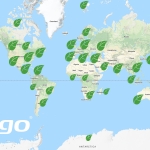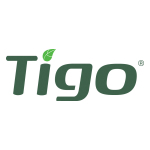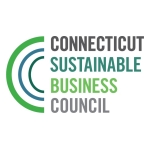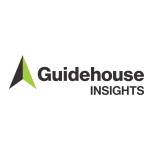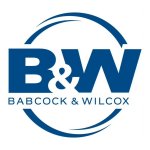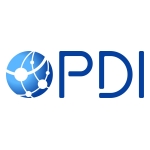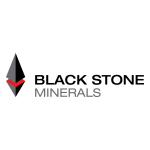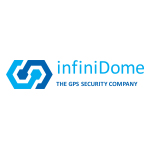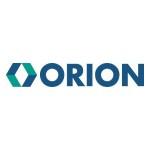-
Orders of $5.1 billion for the quarter, up 4% sequentially and down 34% year-over-year
-
Revenue of $5.0 billion for the quarter, up 7% sequentially and down 14% year-over-year
-
GAAP operating loss of $49 million for the quarter, up 6% sequentially and unfavorable year-over-year.
-
Adjusted operating income (a non-GAAP measure) of $234 million for the quarter was favorable sequentially and down 45% year-over-year.
-
GAAP loss per share of $(0.25) for the quarter which included $0.29 per share of adjusting items. Adjusted earnings per share (a non-GAAP measure) was $0.04.
-
Cash flows generated from operating activities were $219 million for the quarter. Free cash flow (a non-GAAP measure) for the quarter was $52 million.
The Company presents its financial results in accordance with GAAP. However, management believes that using additional non-GAAP measures will enhance the evaluation of the profitability of the Company and its ongoing operations. Please see Tables 1a, 1b and 1c in the section entitled "Charges & Credits" for a reconciliation of GAAP to non-GAAP financial measures. Certain columns and rows in our tables and financial statements may not sum up due to the use of rounded numbers.
LONDON & HOUSTON--(BUSINESS WIRE)--Baker Hughes Company (NYSE: BKR) ("Baker Hughes" or the "Company") announced results today for the third quarter of 2020.
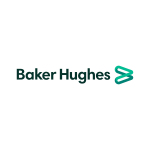
|
Three Months Ended
|
|
Variance
|
(in millions except per share amounts)
|
September 30,
2020
|
June 30,
2020
|
September 30,
2019
|
|
Sequential
|
Year-
over-year
|
Orders
|
$
|
5,106
|
|
$
|
4,888
|
|
$
|
7,783
|
|
|
4%
|
(34)%
|
Revenue
|
5,049
|
|
4,736
|
|
5,882
|
|
|
7%
|
(14)%
|
Operating income (loss)
|
(49)
|
|
(52)
|
|
297
|
|
|
6%
|
U
|
Adjusted operating income (non-GAAP)
|
234
|
|
104
|
|
422
|
|
|
F
|
(45)%
|
Net income (loss) attributable to Baker Hughes
|
(170)
|
|
(195)
|
|
57
|
|
|
13%
|
U
|
Adjusted net income (loss) (non-GAAP) attributable to Baker Hughes
|
27
|
|
(31)
|
|
114
|
|
|
F
|
(76)%
|
EPS attributable to Class A shareholders
|
(0.25)
|
|
(0.30)
|
|
0.11
|
|
|
15%
|
U
|
Adjusted EPS (non-GAAP) attributable to Class A shareholders
|
0.04
|
|
(0.05)
|
|
0.21
|
|
|
F
|
(81)%
|
Cash flow from operating activities
|
219
|
|
230
|
|
360
|
|
|
(5)%
|
(39)%
|
Free cash flow (non-GAAP)
|
52
|
|
63
|
|
161
|
|
|
(17)%
|
(68)%
|
"F" is used in most instances when variance is above 100%. Additionally, "U" is used in most instances when variance is below (100)%.
“Despite continued uncertainty in global oil and gas markets and the ongoing impact of the COVID-19 pandemic, we produced solid results in the third quarter of 2020. I am pleased with the continued execution on cost-out from our Oilfield Services (OFS) and Oilfield Equipment (OFE) teams, the commercial success and performance from Turbomachinery & Process Solutions (TPS) and Digital Solutions (DS), and our continued free cash flow generation during the quarter. I am proud of our employees and their continued commitment to delivering for our customers and shareholders,” said Lorenzo Simonelli, Baker Hughes Chairman and Chief Executive Officer.
“After significant turmoil during the first half of the year, oil markets have somewhat stabilized. However, demand recovery is beginning to level off and significant excess capacity remains, which could create volatility in the future. The outlook for natural gas is slightly more optimistic as forward prices have improved with strong demand in Asia and lower expected future gas production in the U.S.
“Despite the uncertain macro environment, we are executing on the framework we laid out earlier this year. We are on track to hit our goals of right-sizing the business, generating free cash flow, and achieving $700 million in annualized cost savings by year end.
"As we move forward, we are intensely focused on improving the margin and return profile of Baker Hughes despite the near-term macro volatility, while at the same time executing on our long-term strategy to evolve our portfolio along with the energy landscape. Baker Hughes remains committed to leading the energy transition and becoming a key enabler to decarbonizing oil and gas and other industries,” concluded Simonelli.
Quarter Highlights
Supporting our Customers
The TPS segment secured a major LNG order with longtime partner Qatar Petroleum to supply multiple main refrigerant compressors for Qatar Petroleum’s North Field East (NFE) project, executed by Qatargas. The total award is part of four LNG “mega trains,” representing 33 million tons per annum (MTPA) of additional capacity. As part of Baker Hughes’ commitment to support customers in decarbonizing their operations, the latest compression technology for the NFE project is expected to reduce emissions by ~5% versus previous technologies.
TPS also continued to innovate its FPSO technologies to support sustainable operations. The business was awarded a FPSO contract in Latin America for power generation, compression, and related equipment, including six LM2500+G4 gas turbines and two high pressure compressors for gas reinjection. The contract includes major capital spare parts and services.
The OFS segment delivered 83% of its global drilling services jobs remotely, compared to 72% in the second quarter. OFS remote operations have led to consistently better outcomes for customers at a record pace, and remote drilling increased most prominently in Asia Pacific (APAC) and the Middle East, and 100% of drilling jobs were completed using remote operations in Latin America and the Russia Caspian Region.
In the OFE segment, the Flexible Pipe Systems product line continues to gain traction in China, and was awarded a contract for high temperature subsea flexible jumpers and associated equipment as part of an Engineering, Procurement and Construction (EPC) project.
OFE also secured a major services contract for the supply of conductor casings for all the deep well drilling programs and associated logistics for a customer in the Middle East. The contract affirms OFE's status as the preferred supplier for premium connectors and casings.
The DS segment secured a major three-year frame agreement with Petrobras for multiple solutions from our Bently Nevada, Nexus Controls, and Panametrics product lines to enhance the customer’s operations through risk mitigation and performance standardization and improvements. A broad range of condition monitoring sensors will be deployed including wireless, vibration and motor sensors, as well as plant control systems, and flare flow meters. The agreement is the largest Bently Nevada order ever for Latin America and includes the latest generation Orbit 60 system launched in 2019.
DS also secured several contracts to deliver advanced technologies for LNG, power generation, and pipeline infrastructure. Bently Nevada was awarded a five-year agreement with Sonatrach in Algeria, providing a range of vibration monitoring systems for multiple LNG and liquid petroleum gas plants. Panametrics secured a three-year contract with Snam for ultrasonic flow meters, helping to ensure 32,000+ km of pipelines in Italy remain stable and safe.
Executing on Priorities
Following several consecutive quarters securing large downstream chemicals contracts, the OFS Chemicals product line continued to win contracts in the third quarter including a five-year contract to provide process and fuel treatment products and services to HollyFrontier in North America. OFS will provide hydrocarbon treatment products and services at HollyFrontier’s four U.S. refineries.
OFS also continued to focus on its differentiated portfolio with another consecutive quarter securing multi-year contracts for drilling services, completions, and artificial lift. In Guyana, OFS secured a five-year contract for drilling services, drill bits, and drilling and completion fluids. The Artificial Lift product line was awarded a contract for equipment and services in offshore Qatar, displacing a major competitor.
TPS achieved important execution milestones for LNG projects in the third quarter. In September, TPS completed the successful mechanical and performance tests for one of its largest size expander-compressors for Novatek’s Arctic LNG 2 project. TPS also completed the first phase of the Calcasieu Pass LNG project with Venture Global, shipping the first two equipment modules from Baker Hughes’ facility in Italy to the U.S.
DS continued to drive growth across industrial end markets, including aerospace and automotive. Bently Nevada achieved its first order for the Orbit 60 system outside of the oil and gas sector, signing a contract with an iron ore mining customer in Australia. The Waygate Technologies product line launched a unique high energy CT scanner system and secured a large multi-year inspection service order with a space exploration customer. In China, DS won multiple orders for sensor and inspection technologies with electric vehicle and aerospace OEMs.
Leading with Innovation
Baker Hughes continued to drive advancements in leading technologies while supporting its strategy to lead in the energy transition. TPS successfully tested the world’s first “hybrid” hydrogen turbine designed for a gas network with Snam, paving the way to implement adoption of hydrogen blended with natural gas in Snam’s current transportation network infrastructure. The test used a NovaLT™12 gas turbine with a 10% blend of hydrogen with natural gas. Once installed, the turbine can compress and move hydrogen fuel blends through Snam’s network of pipelines while using the same fuel to power itself, significantly contributing to the reduction of CO2 emissions in Italy.
OFS introduced the Lucida advanced rotary steerable service, which integrates hardware, software, automation, and remote connectivity to help customers drill faster and deliver more precise, higher-quality wells. The service fully complements OFS’ automation and remote operations services. Lucida is designed to maximize directional drilling performance and well productivity by incorporating advanced electronics and near-bit sensors that enable drillers to more precisely guide bottomhole assemblies.
OFE launched the Terminator vessel-deployed subsea wellhead cutting system, using a first-of-its-kind mechanical wellhead removal method to reduce time, fuel consumption and safety risks . Terminator was successfully launched with Wintershall DEA in Norway, cutting a subsea wellhead from an abandoned exploration well in 360 meters of water in only 35 minutes, compared to five or six hours with alternative abrasive cutting methods. Terminator joins the Subsea Connect suite of technologies for OFE and OFS customers, and it is smaller and lighter than previous systems.
DS continued to gain traction with its innovative Flare.IQ technology, securing a five-year contract with a North American customer. A key technology in Baker Hughes’ energy transition portfolio, Flare.IQ helps operators manage their flare assets remotely and can also reduce methane emissions, ensure high-efficiency flare combustion, and reduce steam usage in flare systems using advanced sensors and analytics.
The BakerHughesC3.ai joint venture alliance secured a contract with a customer in the North Sea for BHC3™ Reliability. BHC3 Reliability is a comprehensive software solution that provides reliability engineers, process engineers, and maintenance managers with AI-enabled insights to address process and equipment performance risks. The application delivers value through increased revenue from recovered production, reduced costs of unplanned downtime, extended equipment life, and improved safety in operations.
Consolidated Results by Reporting Segment
Consolidated Orders by Reporting Segment
|
|
|
(in millions)
|
Three Months Ended
|
|
Variance
|
Consolidated segment orders
|
September 30,
2020
|
June 30,
2020
|
September 30,
2019
|
|
Sequential
|
Year-
over-year
|
Oilfield Services
|
$
|
2,296
|
|
$
|
2,411
|
|
$
|
3,354
|
|
|
(5)
|
%
|
(32)
|
%
|
Oilfield Equipment
|
432
|
|
699
|
|
1,029
|
|
|
(38)
|
%
|
(58)
|
%
|
Turbomachinery & Process Solutions
|
1,885
|
|
1,313
|
|
2,784
|
|
|
44
|
%
|
(32)
|
%
|
Digital Solutions
|
493
|
|
465
|
|
616
|
|
|
6
|
%
|
(20)
|
%
|
Total
|
$
|
5,106
|
|
$
|
4,888
|
|
$
|
7,783
|
|
|
4
|
%
|
(34)
|
%
|
Orders for the quarter were $5,106 million, up 4% sequentially and down 34% year-over-year. The sequential increase was a result of higher order intake in Turbomachinery & Process Solutions and Digital Solutions, partially offset by lower orders in Oilfield Services and Oilfield Equipment. Equipment orders were up 17% sequentially and service orders were down 6%.
Year-over-year, the decline in orders was a result of lower order intake across all segments. Year-over-year equipment orders were down 40% and service orders were down 28%.
The Company's total book-to-bill ratio in the quarter was 1; the equipment book-to-bill ratio in the quarter was 1.1.
Remaining Performance Obligations (RPO) in the third quarter ended at $23.0 billion, an increase of $0.1 billion from the second quarter of 2020. Equipment RPO was $8.3 billion, up 4% sequentially. Services RPO was $14.7 billion, down 1% sequentially.
Consolidated Revenue by Reporting Segment
|
|
|
(in millions)
|
Three Months Ended
|
|
Variance
|
Consolidated segment revenue
|
September 30,
2020
|
June 30,
2020
|
September 30,
2019
|
|
Sequential
|
Year-over
-year
|
Oilfield Services
|
$
|
2,308
|
|
$
|
2,411
|
|
$
|
3,348
|
|
|
(4)
|
%
|
(31)
|
%
|
Oilfield Equipment
|
726
|
|
696
|
|
728
|
|
|
4
|
%
|
—
|
%
|
Turbomachinery & Process Solutions
|
1,513
|
|
1,161
|
|
1,197
|
|
|
30
|
%
|
26
|
%
|
Digital Solutions
|
503
|
|
468
|
|
609
|
|
|
7
|
%
|
(17)
|
%
|
Total
|
$
|
5,049
|
|
$
|
4,736
|
|
$
|
5,882
|
|
|
7
|
%
|
(14)
|
%
|
Revenue for the quarter was $5,049 million, an increase of 7%, sequentially. The increase in revenue was driven by Turbomachinery & Process Solutions, Digital Solutions, and Oilfield Equipment, partially offset by Oilfield Services.
Compared to the same quarter last year, revenue was down 14%, driven by lower volume across the Oilfield Services and Digital Solutions segments, partially offset by Turbomachinery & Process Solutions.
Consolidated Operating Income by Reporting Segment
|
|
|
(in millions)
|
Three Months Ended
|
|
Variance
|
Segment operating income
|
September 30,
2020
|
June 30,
2020
|
September 30,
2019
|
|
Sequential
|
Year-over-
year
|
Oilfield Services
|
$
|
93
|
|
$
|
46
|
|
$
|
274
|
|
|
F
|
(66)
|
%
|
Oilfield Equipment
|
19
|
|
(14)
|
|
14
|
|
|
F
|
37
|
%
|
Turbomachinery & Process Solutions
|
191
|
|
149
|
|
161
|
|
|
28
|
%
|
18
|
%
|
Digital Solutions
|
46
|
|
41
|
|
82
|
|
|
12
|
%
|
(44)
|
%
|
Total segment operating income
|
349
|
|
221
|
|
531
|
|
|
57
|
%
|
(34)
|
%
|
Corporate
|
(115)
|
|
(117)
|
|
(109)
|
|
|
2
|
%
|
(5)
|
%
|
Inventory impairment
|
(42)
|
|
(16)
|
|
—
|
|
|
U
|
U
|
Restructuring, impairment & other charges
|
(209)
|
|
(103)
|
|
(71)
|
|
|
U
|
U
|
Separation related
|
(32)
|
|
(37)
|
|
(54)
|
|
|
13
|
%
|
41
|
%
|
Operating income (loss)
|
(49)
|
|
(52)
|
|
297
|
|
|
6
|
%
|
U
|
Adjusted operating income*
|
$
|
234
|
|
$
|
104
|
|
$
|
422
|
|
|
F
|
(45)
|
%
|
*Non-GAAP measure.
"F" is used in most instances when variance is above 100%. Additionally, "U" is used in most instances when variance is below (100)%.
On a GAAP basis, operating loss for the third quarter of 2020 was $49 million. Operating loss decreased $3 million sequentially and increased $346 million year-over-year. Total segment operating income was $349 million for the third quarter of 2020, up 57% sequentially and down 34% year-over-year.
Adjusted operating income (a non-GAAP measure) for the third quarter of 2020 was $234 million, which excludes adjustments totaling $283 million before tax, mainly related to asset impairments, restructuring and separation related charges. A complete list of the adjusting items and associated reconciliation from GAAP has been provided in Table 1a in the section entitled “Charges and Credits.” Adjusted operating income for the third quarter was up 124% sequentially, driven by increased volume and productivity. Adjusted operating income was down 45% year-over-year driven by lower margins in the Oilfield Services, and Digital Solutions segments, partially offset by volume in Turbomachinery & Process Solutions, and margin expansion in Oilfield Equipment.
Depreciation and amortization for the third quarter of 2020 was $315 million.
Corporate costs were $115 million in the third quarter of 2020, down 2% sequentially and up 5% year-over-year.
Other Financial Items
Income tax expense in the third quarter of 2020 was $6 million. Included in income tax is a $42 million benefit related to the CARES Act. This benefit has been excluded from adjusted earnings per share.
Other non-operating loss in the third quarter of 2020 was $149 million. Included in other non-operating loss was a $132 million loss primarily related to the write-down of assets held for sale.
GAAP diluted loss per share was $(0.25). Adjusted diluted earnings per share was $0.04. Excluded from adjusted diluted earnings per share were all items listed in Table 1a in the section entitled "Charges and Credits" as well as the "other adjustments (non-operating)" found in Table 1b.
Cash flow from operating activities was $219 million for the third quarter of 2020. Free cash flow (a non-GAAP measure) for the quarter was $52 million. A reconciliation from GAAP has been provided in Table 1c in the section entitled "Charges and Credits."
Capital expenditures, net of proceeds from disposal of assets, were $167 million for the third quarter of 2020.
Results by Reporting Segment
The following segment discussions and variance explanations are intended to reflect management's view of the relevant comparisons of financial results on a sequential or year-over-year basis, depending on the business dynamics of the reporting segments.
Oilfield Services
|
|
|
(in millions)
|
Three Months Ended
|
|
Variance
|
Oilfield Services
|
September 30,
2020
|
June 30,
2020
|
September 30,
2019
|
|
Sequential
|
Year-over-
year
|
Revenue
|
$
|
2,308
|
|
$
|
2,411
|
|
$
|
3,348
|
|
|
(4)
|
%
|
(31)
|
%
|
Operating income
|
$
|
93
|
|
$
|
46
|
|
$
|
274
|
|
|
F
|
(66)
|
%
|
Operating income margin
|
4.0
|
%
|
1.9
|
%
|
8.2
|
%
|
|
2.1pts
|
-4.2pts
|
|
|
|
|
|
|
|
|
|
|
|
|
|
|
|
Oilfield Services (OFS) revenue of $2,308 million for the third quarter decreased by $102 million, or 4%, sequentially.
North America revenue was $559 million, down 7% sequentially. International revenue was $1,749 million, a decrease of 3% sequentially, driven by lower revenues in Sub-Saharan Africa, Asia Pacific, and the Middle East, partially offset by Latin America and Europe.
Segment operating income before tax for the quarter was $93 million. Operating income for the third quarter of 2020 was up $47 million sequentially, primarily driven by productivity as a result of cost efficiencies and restructuring.
Oilfield Equipment
|
|
|
(in millions)
|
Three Months Ended
|
|
Variance
|
Oilfield Equipment
|
September 30,
2020
|
June 30,
2020
|
September 30,
2019
|
|
Sequential
|
Year-over-
year
|
Orders
|
$
|
432
|
|
$
|
699
|
|
$
|
1,029
|
|
|
(38)
|
%
|
(58)
|
%
|
Revenue
|
$
|
726
|
|
$
|
696
|
|
$
|
728
|
|
|
4
|
%
|
—
|
%
|
Operating income (loss)
|
$
|
19
|
|
$
|
(14)
|
|
$
|
14
|
|
|
F
|
37
|
%
|
Operating income margin
|
2.6
|
%
|
(2.1)
|
%
|
1.9
|
%
|
|
4.7pts
|
0.7pts
|
Oilfield Equipment (OFE) orders were down $597 million, or 58%, year-over-year, driven by lower order intake in most segments. Equipment orders were down 69% and services orders were down 31% year-over-year.
OFE revenue of $726 million for the quarter decreased $2 million year-over-year. The decrease was driven by lower volume in the Subsea Services, Offshore, Surface Pressure Control, and Subsea Drilling Systems businesses, offset by higher volume in the Subsea Production Systems and Flexible Pipe business.
Segment operating income before tax for the quarter was $19 million, an increase of $5 million year-over-year. The increase was driven by higher cost productivity.
Turbomachinery & Process Solutions
|
|
|
(in millions)
|
Three Months Ended
|
|
Variance
|
Turbomachinery & Process Solutions
|
September 30,
2020
|
June 30,
2020
|
September 30,
2019
|
|
Sequential
|
Year-over-
year
|
Orders
|
$
|
1,885
|
|
$
|
1,313
|
|
$
|
2,784
|
|
|
44
|
%
|
(32)
|
%
|
Revenue
|
$
|
1,513
|
|
$
|
1,161
|
|
$
|
1,197
|
|
|
30
|
%
|
26
|
%
|
Operating income
|
$
|
191
|
|
$
|
149
|
|
$
|
161
|
|
|
28
|
%
|
18
|
%
|
Operating income margin
|
12.6
|
%
|
12.8
|
%
|
13.5
|
%
|
|
-0.2pts
|
-0.9pts
|
Turbomachinery & Process Solutions (TPS) orders were down 32% year-over-year. Equipment orders were down 39% and service orders were down 17%.
TPS revenue of $1,513 million for the quarter increased $316 million, or 26%, year-over-year. The increase was driven by higher equipment volume. Equipment revenue in the quarter represented 46% of total segment revenue, and service revenue represented 54% of total segment revenue.
Segment operating income before tax for the quarter was $191 million, up $30 million, or 18%, year-over-year. The increase was driven by higher volume and cost productivity, offset partially by higher equipment mix.
Digital Solutions
|
|
|
(in millions)
|
Three Months Ended
|
|
Variance
|
Digital Solutions
|
September 30,
2020
|
June 30,
2020
|
September 30,
2019
|
|
Sequential
|
Year-over-
year
|
Orders
|
$
|
493
|
|
$
|
465
|
|
$
|
616
|
|
|
6
|
%
|
(20)
|
%
|
Revenue
|
$
|
503
|
|
$
|
468
|
|
$
|
609
|
|
|
7
|
%
|
(17)
|
%
|
Operating income
|
$
|
46
|
|
$
|
41
|
|
$
|
82
|
|
|
12
|
%
|
(44)
|
%
|
Operating income margin
|
9.2
|
%
|
8.8
|
%
|
13.5
|
%
|
|
0.3pts
|
-4.4pts
|
Digital Solutions (DS) orders were down 20% year-over-year, driven by lower order intake across all businesses.
DS revenue of $503 million for the quarter decreased 17% year-over-year, driven by lower volume across most businesses.
Segment operating income before tax for the quarter was $46 million, down 44% year-over-year. The decrease year-over-year was primarily driven by lower volume.
Charges & Credits
Table 1a. Reconciliation of GAAP and Adjusted Operating Income/(Loss)
|
|
Three Months Ended
|
(in millions)
|
September 30,
2020
|
June 30,
2020
|
September 30,
2019
|
Operating income (loss) (GAAP)
|
$
|
(49)
|
|
$
|
(52)
|
|
$
|
297
|
|
Separation related
|
32
|
|
37
|
|
54
|
|
Restructuring, impairment & other
|
209
|
|
103
|
|
71
|
|
Inventory impairment
|
42
|
|
16
|
|
—
|
|
Total operating income adjustments
|
283
|
|
156
|
|
125
|
|
Adjusted operating income (non-GAAP)
|
$
|
234
|
|
$
|
104
|
|
$
|
422
|
|
Table 1a reconciles operating income (loss), which is the directly comparable financial result determined in accordance with Generally Accepted Accounting Principles (GAAP), to adjusted operating income (a non-GAAP financial measure). Adjusted operating income excludes the impact of certain identified items.
Table 1b. Reconciliation of GAAP and Non-GAAP Net Income
|
|
Three Months Ended
|
(in millions, except per share amounts)
|
September 30,
2020
|
June 30,
2020
|
September 30,
2019
|
Net income (loss) attributable to Baker Hughes (GAAP)
|
$
|
(170)
|
|
$
|
(195)
|
|
$
|
57
|
|
Total operating income adjustments (identified items)
|
283
|
|
156
|
|
125
|
|
Other adjustments (non-operating) (1)
|
90
|
|
156
|
|
—
|
|
Tax on total adjustments
|
(54)
|
|
(11)
|
|
(15)
|
|
Total adjustments, net of income tax
|
319
|
|
301
|
|
110
|
|
Less: adjustments attributable to noncontrolling interests
|
122
|
|
138
|
|
53
|
|
Adjustments attributable to Baker Hughes
|
197
|
|
164
|
|
57
|
|
Adjusted net income (loss) attributable to Baker Hughes (non-GAAP)
|
$
|
27
|
|
$
|
(31)
|
|
$
|
114
|
|
|
|
|
|
|
|
|
|
Denominator:
|
|
|
|
Weighted-average shares of Class A common stock outstanding diluted
|
678
|
|
655
|
|
541
|
|
Adjusted earnings per Class A share— diluted (non-GAAP)
|
$
|
0.04
|
|
$
|
(0.05)
|
|
$
|
0.21
|
|
(1)
|
|
3Q'20: Primarily driven by loss on the write-down of assets held for sale partially offset by a tax benefit related to the CARES Act. 2Q'20: Primarily driven by loss on sale of business partially offset by a tax benefit related to the CARES Act.
|
Table 1b reconciles net income (loss) attributable to Baker Hughes, which is the directly comparable financial result determined in accordance with GAAP, to adjusted net income attributable to Baker Hughes (a non-GAAP financial measure). Adjusted net income attributable to Baker Hughes excludes the impact of certain identified items.
Table 1c. Reconciliation of Cash Flow From Operating Activities to Free Cash Flow
|
|
Three Months Ended
|
(in millions)
|
September 30,
2020
|
June 30,
2020
|
September 30,
2019
|
Cash flow from operating activities (GAAP)
|
$
|
219
|
|
$
|
230
|
|
$
|
360
|
|
Add: cash used in capital expenditures, net of proceeds from disposal of assets
|
(167)
|
|
(167)
|
|
(199)
|
|
Free cash flow (non-GAAP)
|
$
|
52
|
|
$
|
63
|
|
$
|
161
|
|
Table 1c reconciles net cash flows from operating activities, which is the directly comparable financial result determined in accordance with GAAP, to free cash flow (a non-GAAP financial measure).
Contacts
Investor Relations
Jud Bailey
+1 281-809-9088
This email address is being protected from spambots. You need JavaScript enabled to view it.
Media Relations
Thomas Millas
+1 910-515-7873
This email address is being protected from spambots. You need JavaScript enabled to view it.
Read full story here 


